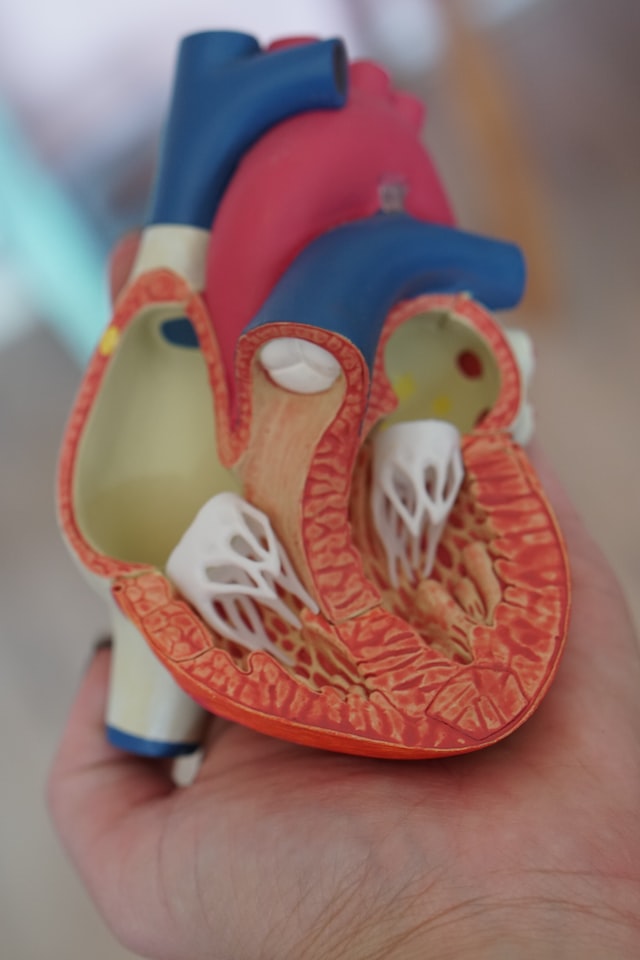Disease
The Most Important Task For Diabetics Is To Prevent Coronary Heart Disease
The ultimate goal of treating diabetes is to reduce the occurrence of coronary heart disease.

Diabetes is an independent high-risk factor for coronary heart disease, which is currently a major cause of death and disability in the population, and the ultimate goal of treating diabetes is to reduce the incidence of coronary heart disease.

We know that diabetes is a chronic non-communicable disease and that its nature actually leads mainly to vascular pathologies, both small and large vessels.
The body needs to rely on blood to transport oxygen and nutrients to all organs and tissues throughout the body. And blood is only safe to transport in the blood vessels; if it runs outside the vessels we call it bleeding.
If blood vessels become narrowed or blocked, the supply of blood and nutrients to organs or tissues will naturally be reduced and dysfunction will occur, and in serious cases, necrosis may occur. We know that the most dangerous diseases to the human body are cardiovascular and cerebrovascular diseases, once the narrowing and occlusion occurs it can lead to brain and heart attacks, which will be life-threatening.

This is why it is so important for diabetic patients to be better prepared to prevent it. Diabetic vasculopathy is not simply a matter of high blood glucose, other factors such as blood pressure, blood lipids, hypercoagulability, inflammatory response, oxidative stress, etc. are all involved, so comprehensive control may be more important than simply lowering sugar. Today we will focus on the secondary prevention of coronary heart disease.
Firstly, what is secondary prevention?
Secondary prevention is also known as pre-clinical prevention (or pre-symptomatic prevention), which means that early detection, early diagnosis and early treatment of the disease are the three early prevention measures.
Through early detection, early diagnosis and appropriate treatment, complications, sequelae and disabilities can be avoided or reduced, or the duration of disability can be shortened.
There is also primary prevention, which is also known as etiological prevention, i.e. the elimination of risk factors for the development of the disease.
How can I prevent the development of coronary heart disease?
This is not a simple matter of controlling blood sugar, but requires comprehensive treatment, which needs to be considered in the following ways
1, Screening for coronary heart disease in diabetic patients
Diabetic patients are at high risk of coronary heart disease, but in addition, have the following risk factors need to be screened for coronary heart disease, such as typical or atypical angina symptoms, age > 55 years, with peripheral or neck vascular disease, and the presence of 2 or more risk factors at the same time.

These risk factors are hyperlipidaemia, hypertension, smoking, family history of early onset coronary heart disease, microalbuminuria and progressive retinopathy.
Screening tests for coronary artery disease include electrocardiography, echocardiography, exercise provocation tests, myocardial nuclear imaging, coronary angiography and coronary CTA.
2, Pharmacological interventions for coronary heart disease in diabetic patients
1, Anti-platelet therapy
Aspirin is recommended as primary prophylaxis for patients >40 years of age with other risk factors and/or diabetes mellitus of more than 10 years duration.
2, Good glycaemic control
The goal of diabetes treatment is to achieve good glycaemic control and for the population
HbA1c control of less than 7% is desirable for the population, but it is not set in stone and needs to be analysed on a case-by-case basis.

3,Anti-hypertensive treatment
The goal of blood pressure control in diabetic patients should be
<140/90mmHg>
As diabetic patients often require 3 to 4 anti-hypertensive drugs to reduce blood pressure to the desired level, ACEIs and ARBs as well as long-acting calcium channel antagonists are recommended as first-line therapy, while cardioselective beta-blockers and thiazide diuretics should be used as second-line anti-hypertensive drugs for diabetic patients.
4,Lipid-lowering therapy
Lipid-lowering therapy should be given to diabetic patients aged ≥40 years or,
<40 years but with other risk factors for cardiovascular disease, with the objectives of lipid-lowering being:>Low-density lipoprotein cholesterol (LDL-C)
<2.59 mmol/L (1OOmg/dl) or a reduction of 30%-40%.>Triglyceride (TG)
<1.69 mmol/L (150 mg/dl)>
Based on the results of clinical trials, the therapeutic target for LDL-C should be
<1.81mmol/L (70mg/dl) in patients with diabetes mellitus combined with coronary artery disease.>
Clinical trials have also shown that in diabetic patients without a history of coronary artery disease and high cholesterol, the administration of statin lipid-lowering therapy is also beneficial in diabetic patients.
In conclusion, the treatment of diabetes is a comprehensive process, not one of simple glycaemic control, but also of treatment of other risk factors is very important.
Although we may be talking mainly about medication here, diet and exercise actually play a very important role in preventing coronary heart disease.

The Mediterranean diet, which is often recommended for the prevention of coronary heart disease, is a diet based on vegetables and fruit, fish, grains, legumes and olive oil, which has a balanced diet and a good antioxidant effect.
I personally believe that if the diet cannot be fully achieved, the same effect can be achieved with appropriate multivitamins, trace elements and dietary supplements.
-
![]()
![]() DiseaseDec 28, 2025
DiseaseDec 28, 2025What Do I Need To Do To Check Myself For Nasopharyngeal Carcinoma? What Tests Are Needed To Confirm The Diagnosis Of Nasopharyngeal Carcinoma?
-
![]()
![]() DiseaseDec 27, 2025
DiseaseDec 27, 2025Is Blood Cancer The Same As Leukaemia? What Are The Physical Symptoms Of Blood Cancer?
-
![]()
![]() DiseaseDec 26, 2025
DiseaseDec 26, 2025Don't treat allergic rhinitis as a cold
-
![]()
![]() DiseaseDec 25, 2025
DiseaseDec 25, 2025What Happens When Eye Cancer Usually Spreads? What Exactly Are The Symptoms Of Eye Cancer?
-
![]()
![]() DiseaseDec 24, 2025
DiseaseDec 24, 2025Sudden Red Spots On Your Skin? Beware Of The "Undead Cancer", Be Alert To These Signs




